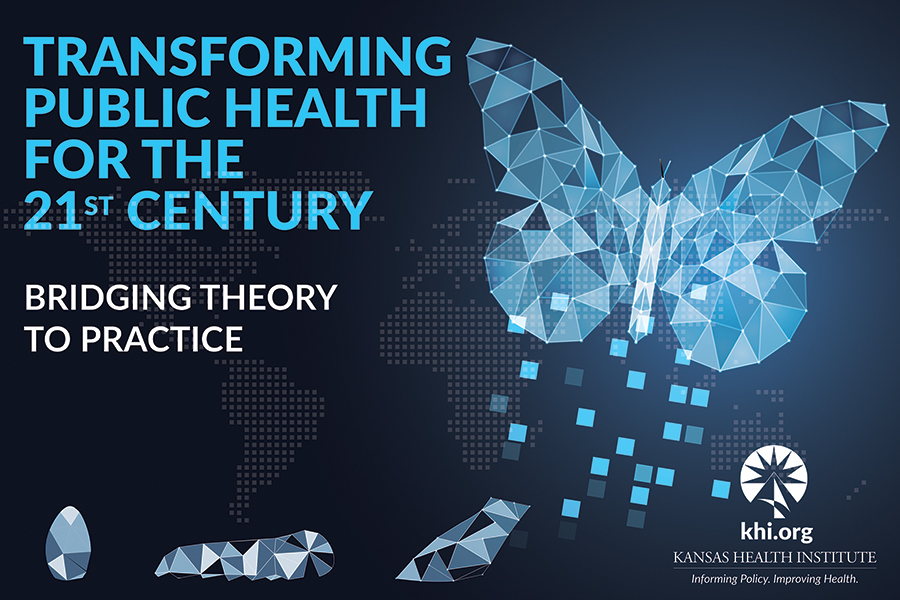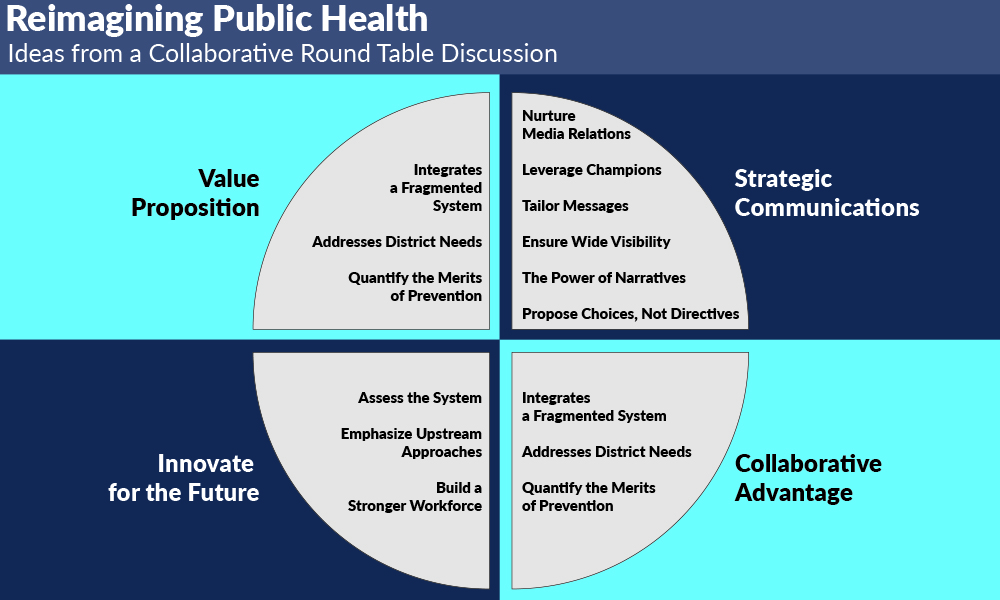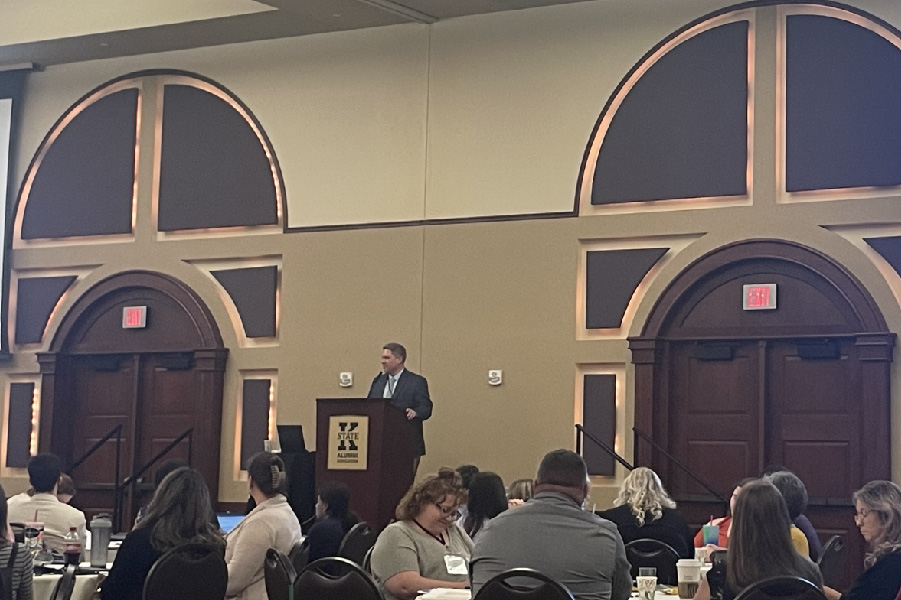Public health is at a pivotal juncture. As we grapple with the complexities and demands of the 21st century, there is an undeniable urgency for introspection, innovation and change. In support of this, the Kansas Health Institute facilitated a collaborative round table discussion with nearly 100 public health professionals at the 2023 Kansas Public Health Association Annual Conference. These discussions focused on reimagining the Kansas public health system, focusing on the value proposition, innovating for the future, communicating with key stakeholders, and bolstering collaboration across the broader public health system. The information here represents common themes and poignant insights from the round table.
Reimagining Public Health in Kansas: Reflections from a Collaborative Round Table Discussion

The Value Proposition of Public Health
A “value proposition” is a persuasive argument for why stakeholders should invest their resources — money, time, effort and trust — in the public health system. Crafting a robust value proposition is pivotal in marshaling the necessary resources to develop a resilient and sustainable public health infrastructure. Key themes included:
- Integrating a Fragmented System: Public health serves at a nexus for various sectors, seamlessly merging their efforts to formulate a comprehensive strategy, amplifying collective impact.
- Addressing Distinct Needs: Public health plugs the holes in the system. It promotes evidence-based approaches, even amidst political resistance, and serves marginalized communities often deprived of health care access or representation.
- Quantifying the Merits of Prevention: Methods like the population attributable fraction and cost-benefit analysis provide metrics that can be used to quantify and communicate the value of public health interventions.
Innovating for the Future
“Innovation” in public health transformation means introducing and adopting new strategies, tools or methods that meaningfully improve health systems, practices and outcomes, addressing the evolving health needs of the population. It’s essential to keep our public health system updated and relevant for modern challenges. As we look to the future of public health in Kansas, several innovative ideas have emerged. Here are some key themes:
- Assessing the System: One group suggested a comprehensive review of the entire public health system in Kansas. This review would help us understand all the parts of the system, find areas for collaboration and identify gaps. It also would give a clearer picture of the role of public health in our communities.
- Emphasizing Upstream Approaches: Another group highlighted the need to move beyond a solely individual-focused perspective and embrace broader, upstream strategies. Such approaches are vital for tackling root causes, such as the social determinants of health, and promoting health equity.
- Building a Stronger Workforce: A third group discussed the importance of strengthening our public health workforce. Ideas in this area included better training, more consistent funding and integration of roles. A job rotation or cross-training program also was mentioned, allowing people to experience different parts of the public health system.
Strategic Communications
“Strategic communications” is the practice of purposefully crafting and disseminating messages to achieve specific objectives. A range of insightful ideas emerged from the discussions, highlighting ways public health leaders could communicate more strategically. Here are the primary insights:
- Nurturing Media Relations: Before any crisis unfolds, it’s pivotal to establish and strengthen ties with the media. Public health entities should collaborate with seasoned public relations specialists to cultivate these essential connections.
- Ensuring Wide Visibility: Public health should be visible in all venues, spanning traditional media outlets such as newspapers and television, digital platforms like social media, and local community hubs such as town halls, educational events and school board sessions.
- Leveraging Champions: Public health should work with champions from across the public health system to advocate for change on topics and in places that governmental public health organizations may be constrained.
- The Power of Narratives: A recurring theme was the value of storytelling. Stories can create narratives around public health issues that resonate on an emotional level in ways that numbers and statistics cannot.
- Propose Choices, Not Directives: Offer alternatives concerning policy matters. Demonstrating a thorough analysis can foster trust and assist decision-makers in making well-informed choices, while accommodating diverse values within the decision-making process.
- Tailor Messages: For public health messaging to resonate, it must align with the cultural and political values of varied audiences.
Collaborative Advantage
“Collaborative advantage” refers to the “creation of synergy between collaborating organizations, that achieve something unusually creative, that no organization could have accomplished on its own.” Throughout the discussions at the round table, the significance of collaboration was accentuated. The following encapsulates the primary insights that emerged:
- Academic Synergies: Participants highlighted the value of master’s of public health (MPH) programs partnering with fields such as business and communications, fostering innovative concentrations for modern public health professionals in areas such as communications, strategy and entrepreneurship.
- Engage Policymakers: The importance of involving policymakers in public health decision-making processes was highlighted, underscoring their role in shaping impactful policies.
- Seek Common Ground: A salient point was the necessity to identify mutual objectives and resist the urge to be territorial. This approach facilitates cohesive action and reduces friction among stakeholders.
- Leverage Established Connections: Rather than reinventing the wheel, there’s value in optimizing and building upon existing partnerships and networks to further public health objectives.
Conclusion
In reflecting on the comprehensive discussions held at the KPHA conference, public health in Kansas stands on the precipice of change. The round table underscored the multifaceted nature of public health and the interplay of various components — from strategic communication to collaboration — that can propel the system forward. Drawing from the rich insights provided, it’s evident that our journey toward transforming public health requires an orchestrated effort, anchored in the core tenets discussed: value proposition, innovation, strategic communication, and collaborative advantage. As we forge ahead, embracing these principles will be pivotal to ensuring a robust and resilient public health system that serves the evolving needs of Kansas’s residents.


Kevin Kovach, Dr.P.H., M.Sc., KHI Senior Analyst, speaks at the 2023 Kansas Public Health Association Annual Conference.
Note: Special thanks to the Kansas Public Health Association, a professional association for Kansas public health practitioners, professionals, and advocates.
About Kansas Health Institute
The Kansas Health Institute supports effective policymaking through nonpartisan research, education and engagement. KHI believes evidence-based information, objective analysis and civil dialogue enable policy leaders to be champions for a healthier Kansas. Established in 1995 with a multiyear grant from the Kansas Health Foundation, KHI is a nonprofit, nonpartisan educational organization based in Topeka.